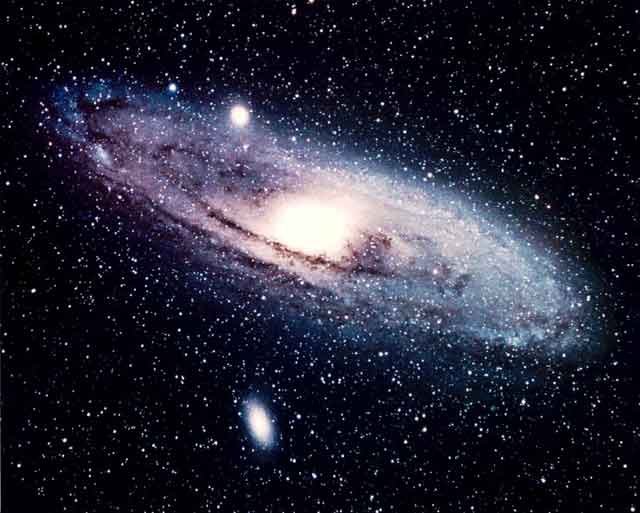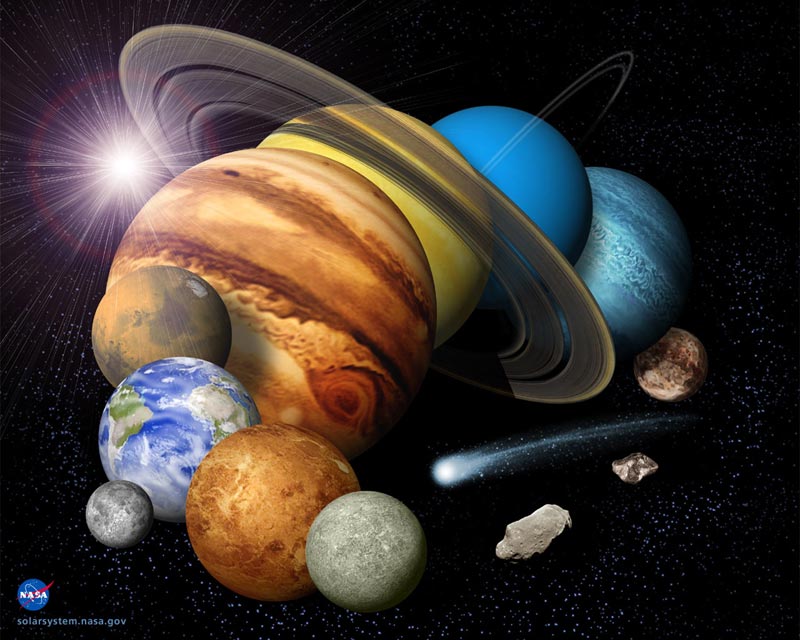 To date, humans have launched only four space probes that will eventually leave the solar system. These vehicles will likely travel across the depths of space for millions of years to come. NASA launched all four of these remarkable craft during the 1970s to make the first close-up studies of the gas giants in the outer solar system. Following their historic visits to our largest planetary neighbors, the four vehicles followed paths that will carry them beyond the edge of the solar system and into interstellar space.
To date, humans have launched only four space probes that will eventually leave the solar system. These vehicles will likely travel across the depths of space for millions of years to come. NASA launched all four of these remarkable craft during the 1970s to make the first close-up studies of the gas giants in the outer solar system. Following their historic visits to our largest planetary neighbors, the four vehicles followed paths that will carry them beyond the edge of the solar system and into interstellar space.
A twin spacecraft named Pioneer 11 also visited Jupiter in 1974 and continued on to make a flyby of Saturn in 1979. Pioneer 11 too is now on its way into deep space as it heads towards the constellation Aquila (The Eagle). The spacecraft should pass close to one of the stars in that constellation in about 4 million years. Pioneer 11 has also stopped transmitting to Earth, and its final signal was received in November 1995.
Two more NASA probes that built on the successful missions of Pioneer 10 and 11 were the Voyagers. Voyager 1 also visited Jupiter and Saturn and is presently sailing towards the outer limits of the solar system. The craft is headed towards the constellation Camelopardalis (The Giraffe), a star of which it will fly close to in about 300,000 years. Voyager 2 flew past Jupiter, Saturn, Uranus, and Neptune during its Grand Tour of the solar system, but the probe is now headed towards the star Sirius in the constellation Canis Majoris (The Big Dog). Sirius is the brightest star in the night sky, and Voyager 2 will pass close to it in about 160,000 years. Both of the Voyager probes are still transmitting and are expected to continue sending signals to Earth until around 2020 when their power sources decay.
 The two Voyagers will be over 10 billion miles from the Sun by then, and it is hoped they will provide the first scientific measurements of the edge of the solar system and the beginnings of interstellar space. The prevailing theory accepted by most researchers says that the edge of the solar system consists of three boundaries called the termination shock, heliopause, and bow shock. The termination shock is believed to mark the transition in the velocity of the solar winds emanating from the Sun from supersonic to subsonic speeds. Even further away is the heliopause, which scientists conjecture is a region where the solar wind ceases to exist. Beyond may lie a bow shock bombarded by galactic cosmic rays. However, these theories of the solar system's outer reaches remain unproven. Only the Voyager probes may be able to provide scientists with any answers about the true nature of this region of space anytime soon.
The two Voyagers will be over 10 billion miles from the Sun by then, and it is hoped they will provide the first scientific measurements of the edge of the solar system and the beginnings of interstellar space. The prevailing theory accepted by most researchers says that the edge of the solar system consists of three boundaries called the termination shock, heliopause, and bow shock. The termination shock is believed to mark the transition in the velocity of the solar winds emanating from the Sun from supersonic to subsonic speeds. Even further away is the heliopause, which scientists conjecture is a region where the solar wind ceases to exist. Beyond may lie a bow shock bombarded by galactic cosmic rays. However, these theories of the solar system's outer reaches remain unproven. Only the Voyager probes may be able to provide scientists with any answers about the true nature of this region of space anytime soon.All four of these distant space probes used the gravitational attraction of the planets they visited to slingshot themselves onto the trajectories they currently follow. These gravitational assists accelerated the vehicles to some of the highest speeds ever reached by manmade objects. Traveling slowest of the foursome is Pioneer 11 at about 26,000 mph (42,000 km/h) with respect to the Sun. Pioneer 10 is currently moving at a rate of over 27,000 mph (44,000 km/h) while Voyager 2 is speeding along at about 36,000 mph (58,000 km/h). The fastest probe, however, is Voyager 1 with a velocity of nearly 39,000 mph (63,000 km/h). Given its greater speed, Voyager 1 currently holds the record as the fastest interplanetary spacecraft and has passed the Pioneers to become the farthest manmade object from the Sun.
None of these four spacecraft is traveling towards our closest star Proxima Centauri that lies about 4.2 light years away. If Voyager 1 were headed in that direction, however, it would still take the vehicle over 73,000 years to get there!












